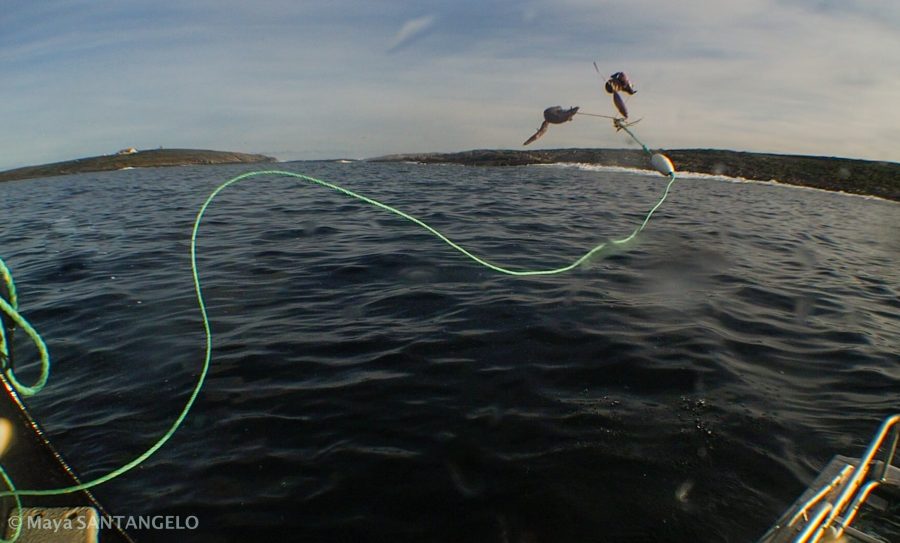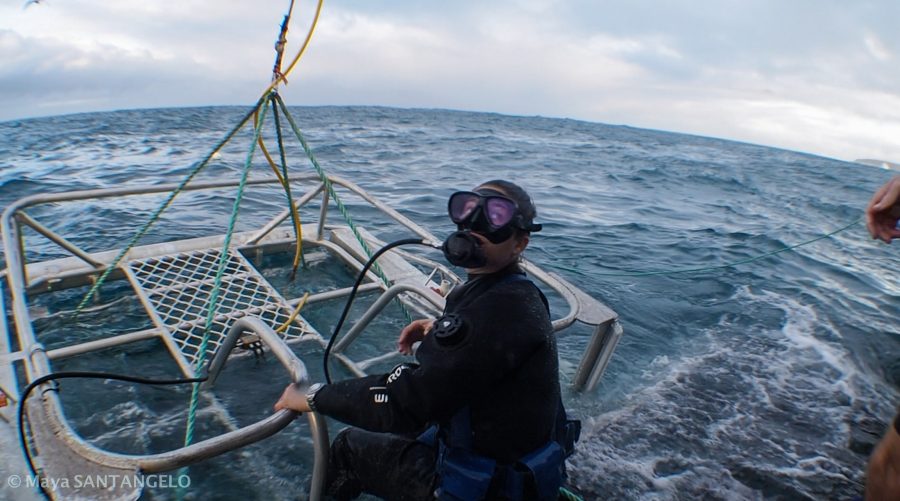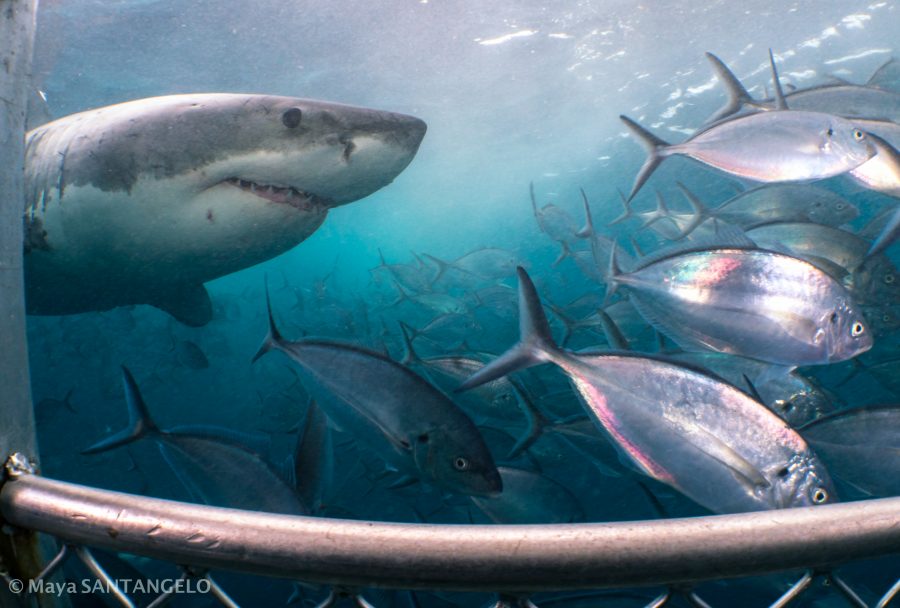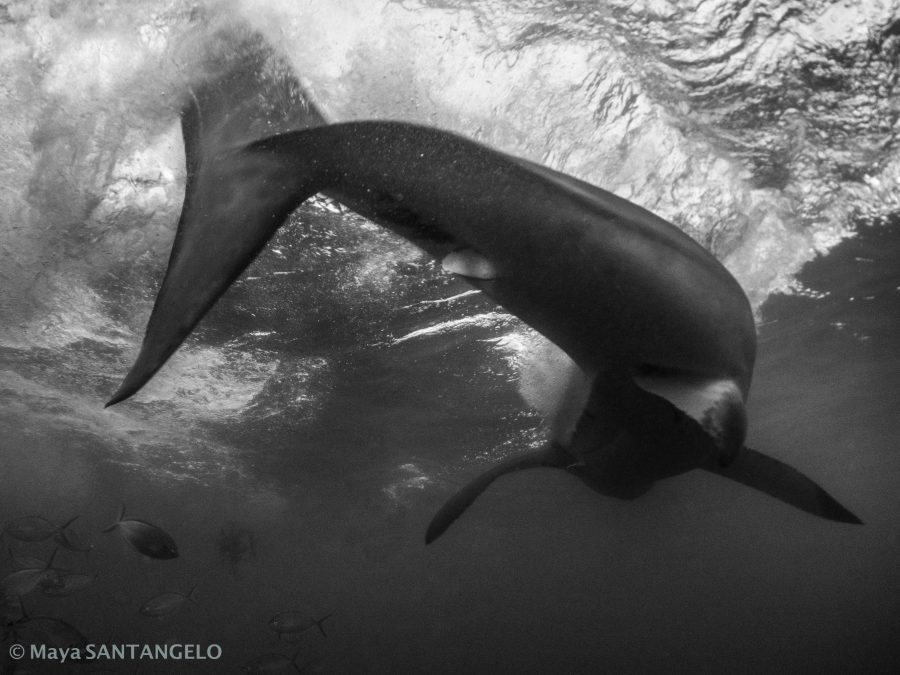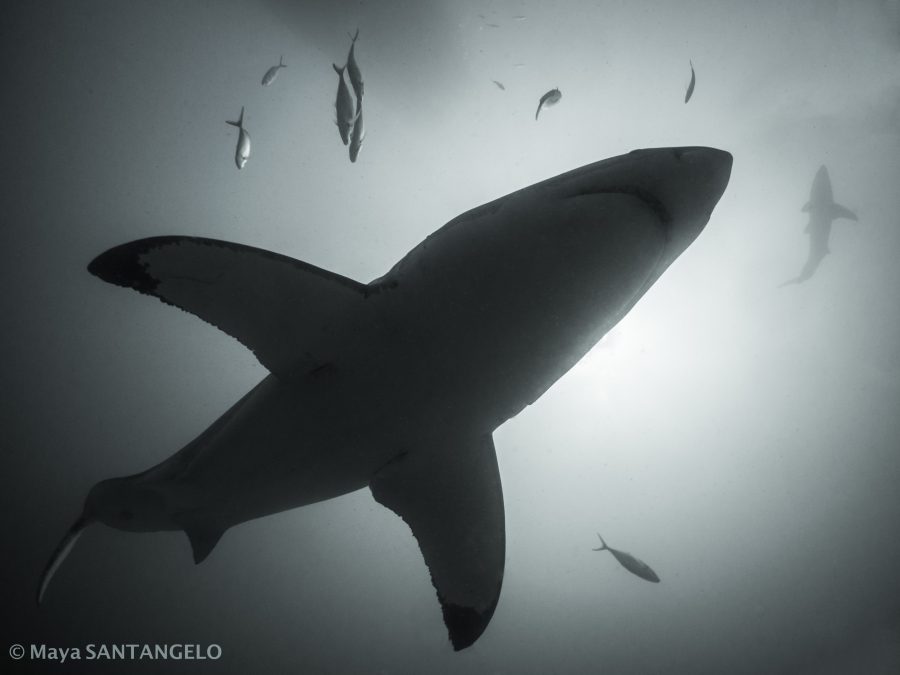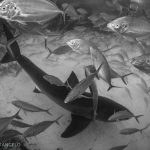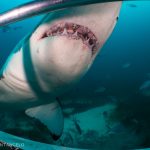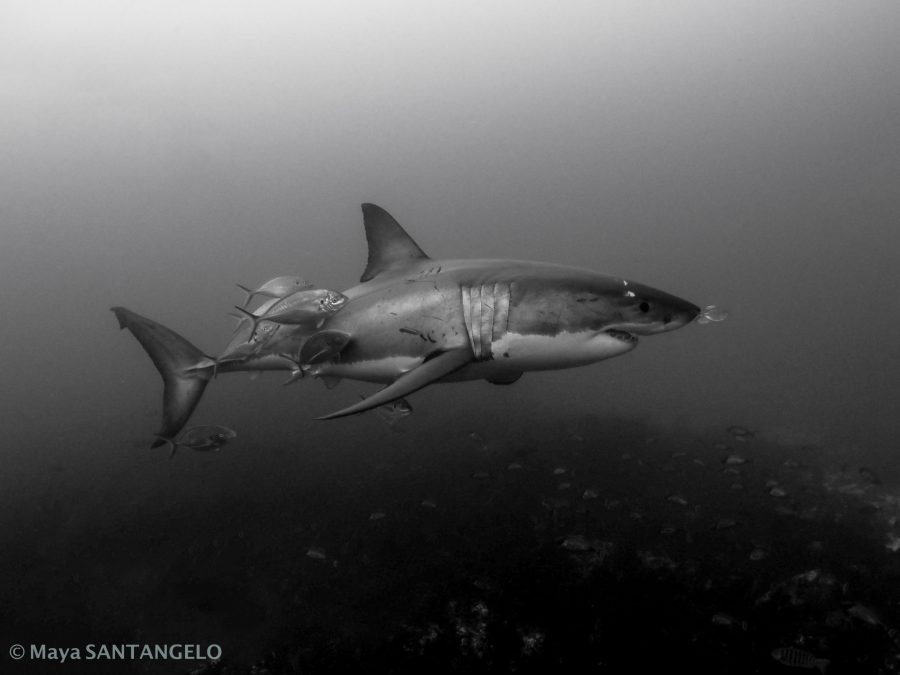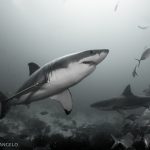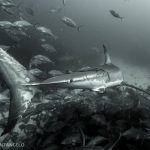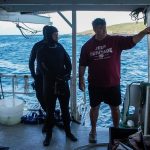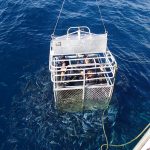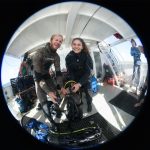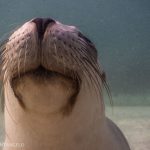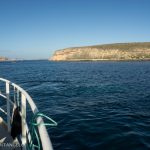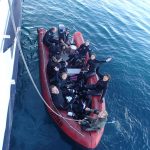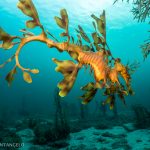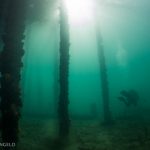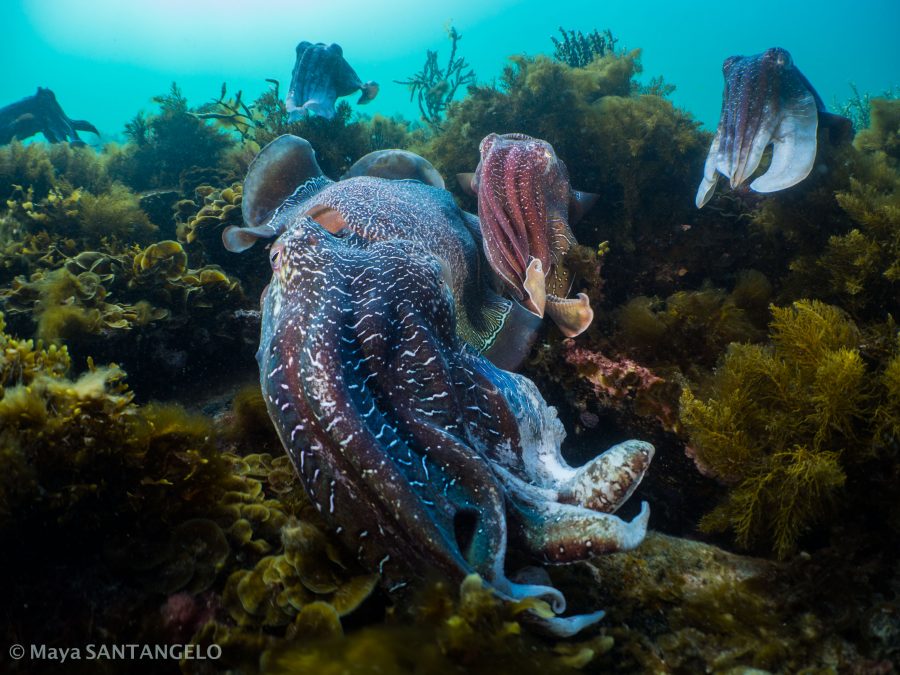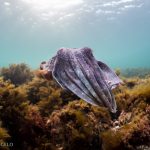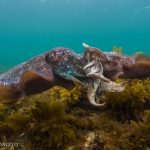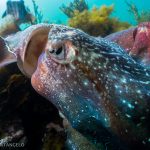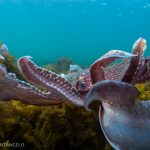I have always loved diving with sharks. There is something so indescribably fascinating about being in the water with some of the most ancient and ecologically important animals in our oceans. Ever since seeing my first grey nurse shark (Carcharias taurus) years ago as a young and bubbly Jr Advanced Diver in Sydney, each experience of seeing a new species has been an exciting and inspiring milestone in my dive logs and evolution as a marine biologist. So you can imagine my excitement when I was given the opportunity to spend my first big experience of my scholarship year diving with the most famous of the ocean predators – the Great White Sharks of South Australia! I was on my way to Port Lincoln to join long-time Rolex Scholarship supporters, Rodney Fox Shark Expeditions (RFSE) in the global home of great white shark cage diving.
The Rolex Scholarship is all about opportunities to learn from the best. After surviving an attack from a Great White shark (Carcharodon carcharias) Rodney Fox dedicated his life to understanding more about this species, and became a pioneer in the world of shark diving. Through his involvement in inventing the shark cage, capturing the first underwater footage of a great white, and becoming the first shark cage tour operator in the world, Rodney put South Australia on the map as the home of shark cage diving. Today, RFSE and the team of passionate crew led by Andrew Fox, is unique in the world of shark diving tourism in its commitment to researching and understanding white sharks as part of the Fox Shark Research Foundation. As the only liveaboard cage diving operator in Australia, RFSE provides the ideal platform for studying and documenting white sharks, to ultimately contribute to a greater public appreciation and development of the best management and conservation possible. As well as the opportunity to gain insight into the expedition industry from a leading operation, this experience would also be a great chance for me to learn from the best about how shark diving tourism can contribute to researching these apex predators.
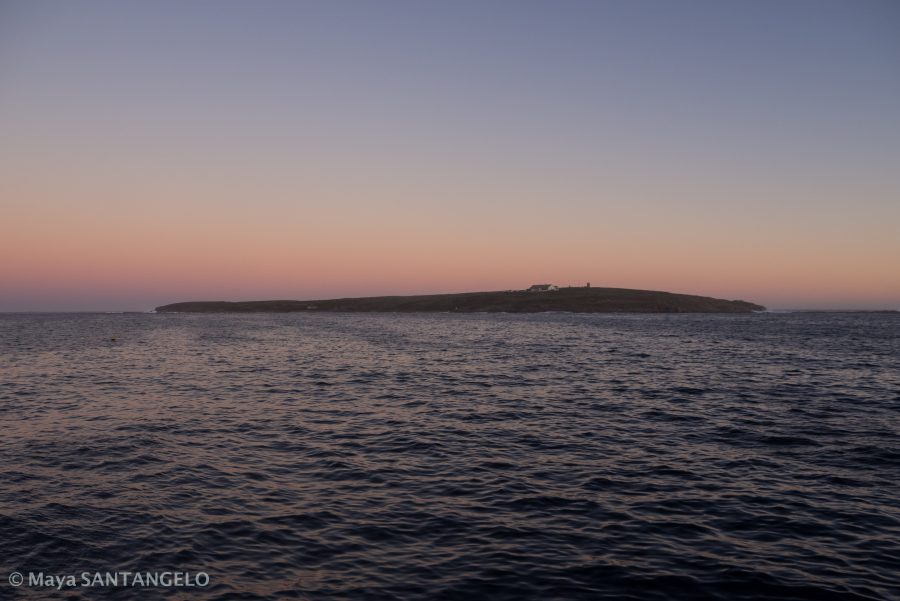
The home of great white shark diving in South Australia is a group of remote, rocky islands called the Neptune Islands. These islands boast a variety of marine animals and seabirds, including some of the largest colonies of fur seals in Australia. As a result of the large numbers of breeding pinnipeds found here, the Neptune Islands are regular, very productive feeding grounds for white sharks along their migrations around Australia. What makes the Neptune Islands special, is that they not only tend to have white sharks throughout the year, but it is also one place where adult females and males are seen together at the same time. During winter and spring, at a time when the fur seal pups are just learning to swim, the super giant female great white sharks are seen at the Neptunes, amongst smaller males that frequent throughout the year.
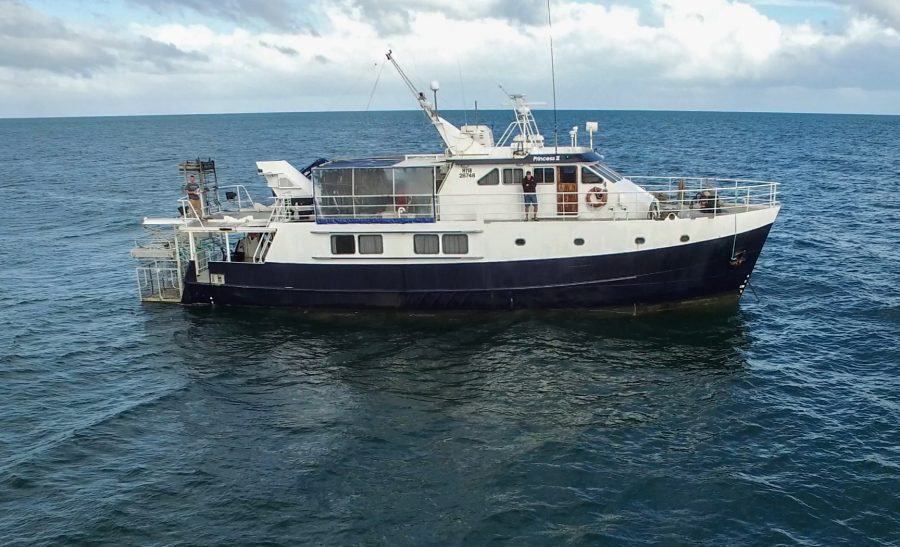
Joining the crew of RFSE during this exciting winter period made it easy to forget about the cold, rough conditions on the Southern Ocean, in hopes of sighting some of the largest white sharks in Australia. Setting out from Port Lincoln, I joined crew members Rory, Bec, Mike, Kristi and skipper Shawn on my first expedition aboard the Princess II. Upon arrival to the South Neptune Islands all to ourselves, the crew was quick to jump into action, deploying the surface cage into the water and preparing the bait and berley (a delicious tuna mince chum) to attract the sharks closer to the boat for us to observe. We didn’t have long to wait before a few sub-adult sized (3-4m) Great White Sharks came in close to the boat, and the first group of eager divers jumped into the surface cage.
As my first experience working aboard a liveaboard/expedition dive operation, cage diving or otherwise, I was eager to learn as much as possible. Lucky for me, hard work was not in short supply aboard the Princess II, and the crew were great in involving me in the operation as much as possible. As part of the crew, I was able to help in a variety of deckhand and cage diving associated responsibilities. One of the most important parts of the job working in the shark cage diving industry is learning and understanding how to handle the bait (juicy tuna chunks and gills tied on the end of a float line). As the bait and berley are used purely as a way to attract an otherwise elusive animal to the area for us to observe for education, research and conservation purposes, handling the bait is a job that requires undivided attention, good eyes on the water (polarized glasses and a shark spotter on the upper deck come in very handy here), and fast reflexes to pull the bait away and ensure the sharks are not consuming the bits of tuna at the end of the line.
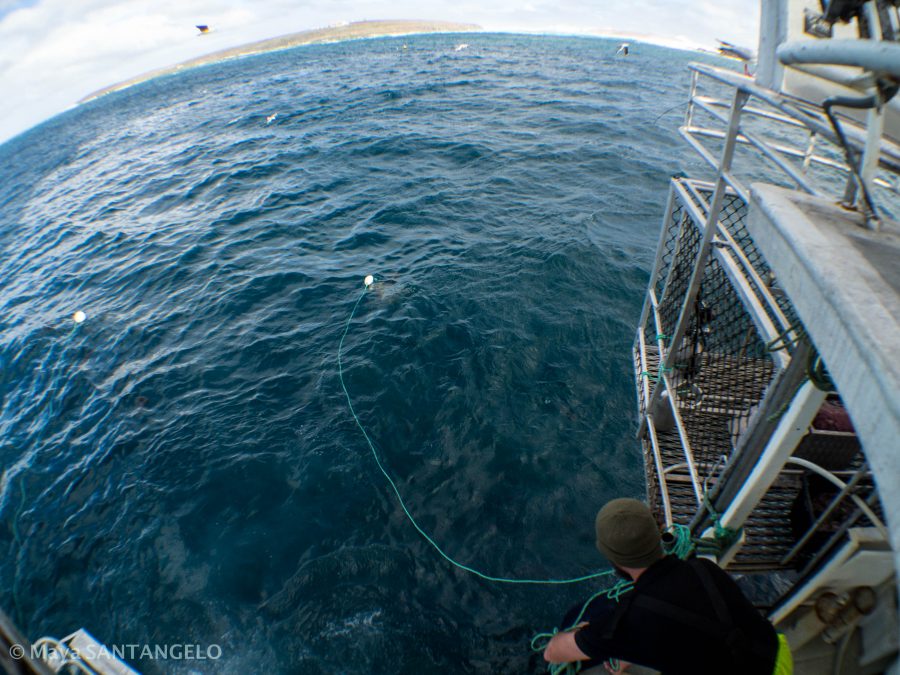
While working on the deck, getting to watch the white sharks from the surface was a consistently jaw-droppingly awesome sight. They are such impressive animals! Excitement levels were high among all the divers coming and going from the surface cage, and I couldn’t wait to get the chance to jump in and see them up close for myself. With the day coming towards an end, Rory looked across the deck from the other bait line and ask me if I wanted to jump in… I only answered with a huge cheesy smile and very excited nod.
Gearing up as quickly as possible, I grabbed my camera, threw on my weight harness and plunged into the opening of the cage and into the chilly Southern Ocean. Thanks to my Waterproof D9 Drysuit, I was rugged up and able to focus on the action around me rather than the water temperature. I settled in one corner of the cage, with a large viewing window at my right shoulder. Despite the intense amount of water movement, and hoards of silver trevally all around the cage, it felt very quiet waiting in excited suspense, keeping my eyes peeled for the much bigger fish in the water.
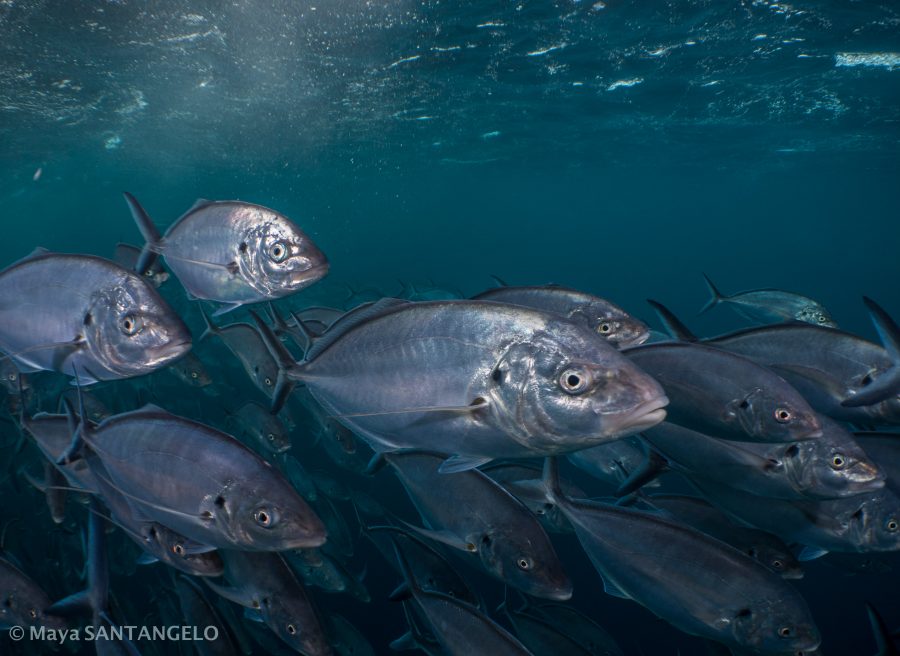
Out of the corner of my eye, I spotted him in the distance moving towards the cage. After spending the day observing their behaviour and movements from the surface, I had a good idea of what he was up to. It made a wide arc towards me, closer and closer to the point where it stuck its nose right in through the window next to me, inches from my face.
I knew that while working with RFSE I would be up for amazing chances to get up close and personal with great white sharks, but I never imagined my first encounter would be THAT close! Being close enough to see the individual Ampullae of Lorenzini, beautiful blue iris of the eye, and the teeth of the upper jaw still retracted, I did not feel scared, but instead so fortunate to be able to experience such a perfect example of simple curiosity! After a few seconds, it backed away and continued swimming around the cage, displaying incredible strength and power as it swam after the bait. Just like my first time ever seeing a shark, this encounter was certainly something I knew I would never forget.
With such an awesome first expedition and encounter to kick off my Rodney Fox experience, I could not have been more excited to see what the next expeditions would bring. One thing that RFSE is best known for, is it’s world renowned ‘ocean floor’ cage diving experience. Not only did Rodney Fox pioneer the development of the shark cage itself, but RFSE are the only operator in the world that offers a cage dive to the ocean floor, and with that, an entirely different and unique perspective of the sharks.
Leaving the bait lines and the surface behind and descending into their territory, and a much more natural habitat, the sharks are so much more composed and relaxed. The bottom cage experience lets you fully appreciate the impressive size, agility and grace as the sharks swim curiously around the cage. Even better, is the rare opportunity to see a variety of different shark behaviours as the sharks interact with each other, as well as with other marine life, including giant smooth rays, eagle rays and South Australian blue grouper, among the large schools of silver trevally and leatherjackets. Never have I felt so lucky to witness such an awe-inspiring sight as a dozen huge great white sharks swimming together all around the cage!
Over the next 5 weeks and 5 more expedition trips on board The Princess II, I was involved as crew in all aspects of the diving operation, including being trained up as a bottom cage captain, identifying individual sharks, learning which physical features of the sharks are most useful in photo-identification (and how tricky it can be to get a clean ID shot), and accepting the fact that my clothes persistently smelled of tuna. I had the great privilege of joining a huge variety of guests from all walks of life, including passionate shark scientists and conservationists. As a diver and marine biologist, there is something so rewarding about introducing people to animals as fascinating as sharks, and contributing to their growing appreciation and understanding. I’m so grateful to have had the opportunity to join such an awesome, passionate group of crew members, including Andrew Fox himself, to dive with and learn about one of the most ecologically important apex predators!
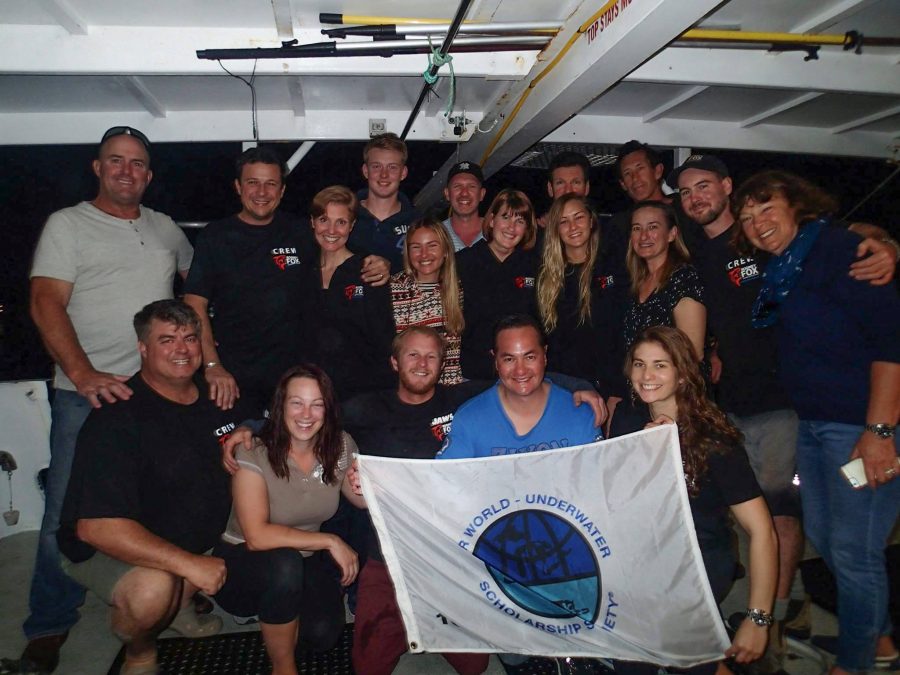
During my time on RFSE, I was also very fortunate to experience some of South Australia’s other iconic marine life. As well as getting a nice workout keeping up with the playful colony of Australian sea lions (Neophoca cinerea) at Hopkins Island, I also had the chance to see one of Australia’s most unique endemic species – the leafy sea dragon (Phycodurus eques)! These flamboyant relatives of seahorses and pipefish are only found in waters of the southern coasts of South and Western Australia, and are some of the most ornately camouflaged animals in the world. Found shyly hiding among the seaweed near the famous Tumby Bay jetty, they were so much fun to watch as they moved so delicately and gracefully in a way that did really resemble a dragon!
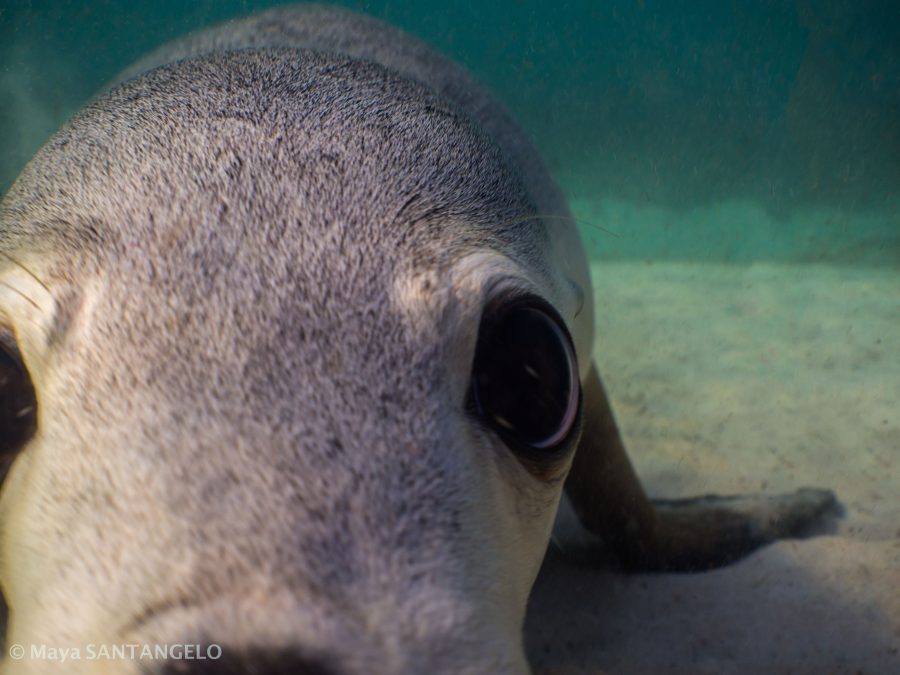
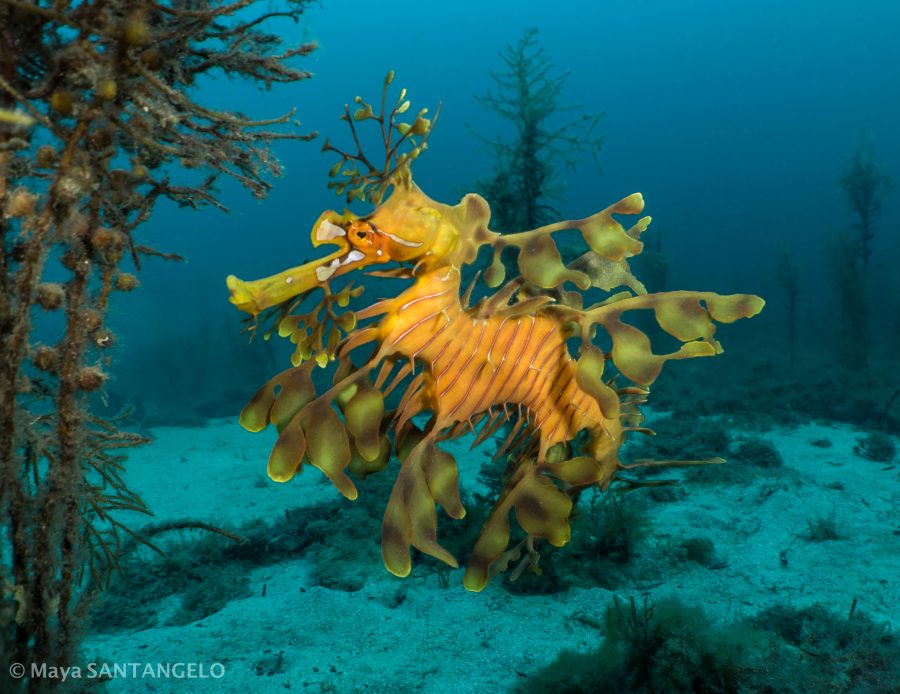
Making our way farther north up into the Spencer Gulf, we were also lucky to see one of the rarest natural spectacles of the underwater world – the mating aggregation of the Australian Giant Cuttlefish (Sepia apama). Every winter, these cuttlefish migrate in astoundingly massive numbers (thousands upon thousands) to about a 6km stretch of coastline around Point Lowly. This is the largest known spawning aggregation of cuttlefish anywhere in the world, and it is such an amazing sight to witness so many unique interactions and behavioural displays as they change colour, shape, texture, and even mimic other sexes to successfully mate… before dying off as they have reached the end of their lifespan. I can only imagine how exciting it must be to see the incredible numbers of eggs hatching a few months later, to start the amazing cycle over again.
Despite the excitement of getting to dive with white sharks and a great variety of South Australia’s amazing marine life, what I valued most about the overall experience working with RFSE, was the opportunity for me to learn about how RFSE and the Fox Shark Research Foundation have successfully developed a platform to contribute to a growing scientific understanding of white sharks through the cage diving industry. Stay tuned for my next blog, where I share more about the research initiatives behind RFSE and some of the current scientific studies of the white sharks of South Australia!
